Wilier Rave SLR SRAM Force AXS XPLR review
Fast and fun, but better suited to lighter gravel and ‘all-road’ riding than the rougher stuff
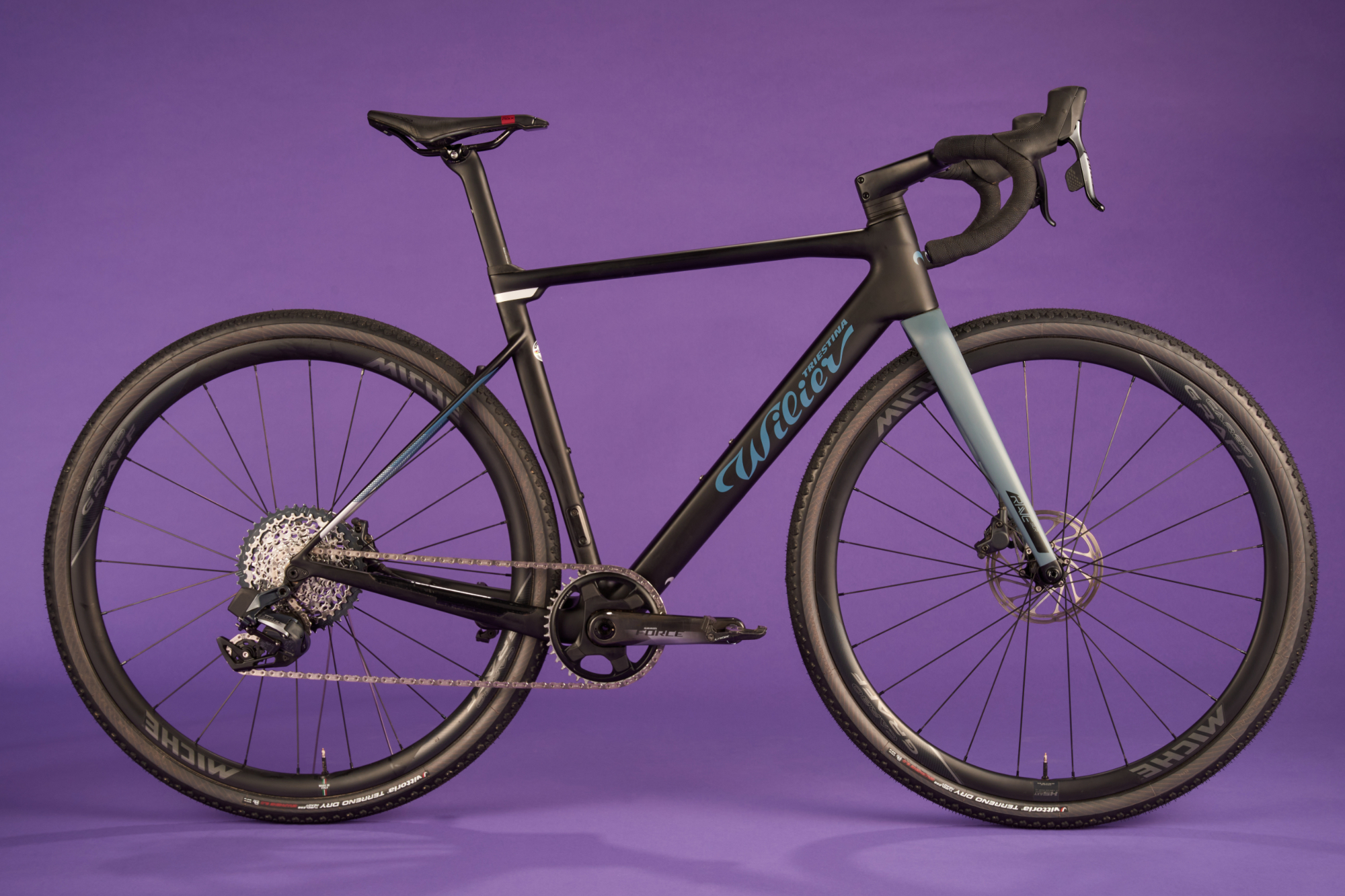
Very much in the camp of ‘lighter gravel’ the Wilier Rave SLR is a lightweight and sharp handling machine – ideal for smooth dirt roads and neglected country lanes. The tyre clearance is relatively narrow, which limits its use on rougher UK trails, but with its blistering speed, it very much has a place on broken roads and mellower trails. It comes with a hefty price tag and there are other bikes which offer a similar experience, in that context whether the Rave SLR is worth it depends on the depth of your pockets and fondness for Italian heritage.
-
+
Lightweight
-
+
Excellent handling
-
+
Super fast
-
-
Very expensive
-
-
Quite narrow tyre clearance
-
-
J-bar handlebar is more trouble than it's worth
You can trust Cycling Weekly.

Gravel bikes as a category have been splitting into two distinct strands: the bikepacking focused, multi-day adventuring sort contrasting with those lighter, faster, snappier models which appear trained on the gravel race scene.
Wilier, an Italian bike manufacturer with a heritage spanning over 100 years, has chosen to focus very much on the latter. The Rave SLR gravel bike cuts a profile striking in its resemblance to that of Wilier's Filante SLR aero bike, while the frame weight of under a kilo in a size medium puts many a carbon road bike to shame.
Frame and finishing kit
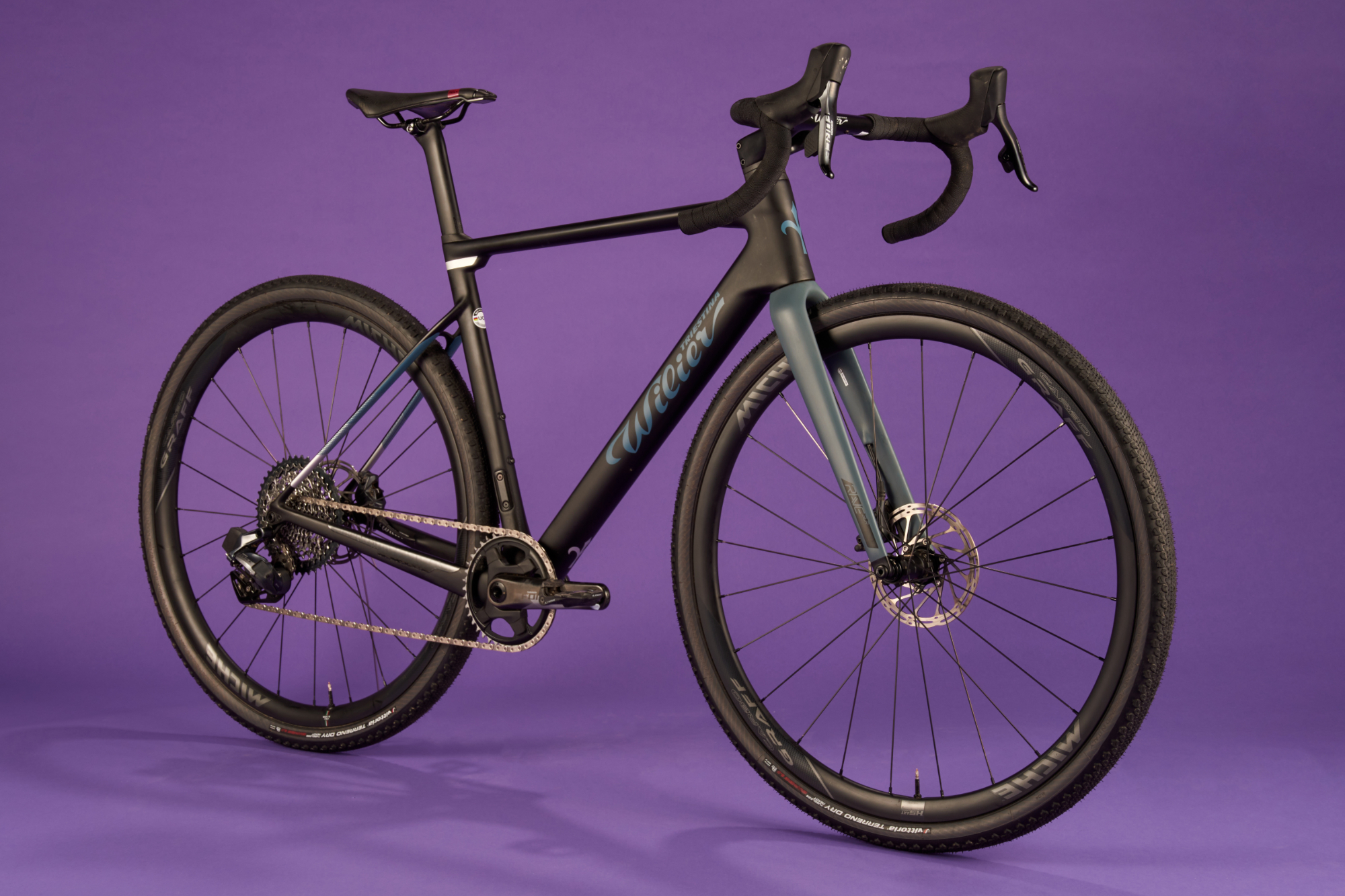
Whilst we may have become accustomed to the contorting tube profiles and plethora of mounting bolts that are sported by so many gravel bikes, the clean, compact and simple lines of the Rave SLR make for an understated – but very sleek – aesthetic.
It’s a gravel bike that wouldn’t look out of place ridden solely on the road and, sure enough, Wilier does offer a range of ‘all-road’ builds, with Ultegra groupsets and SRAM’s larger 2x AXS gearing.
But with that said, the Rave SLR does still have a whole raft of distinctly gravel attributes. The head angle is relatively slack at 71 degrees – although there is a fair number of gravel bikes that are raked out further, there’s still many which come in steeper. This has been done in conjunction with a slightly shorter stem (95mm) and slightly longer reach (384mm).
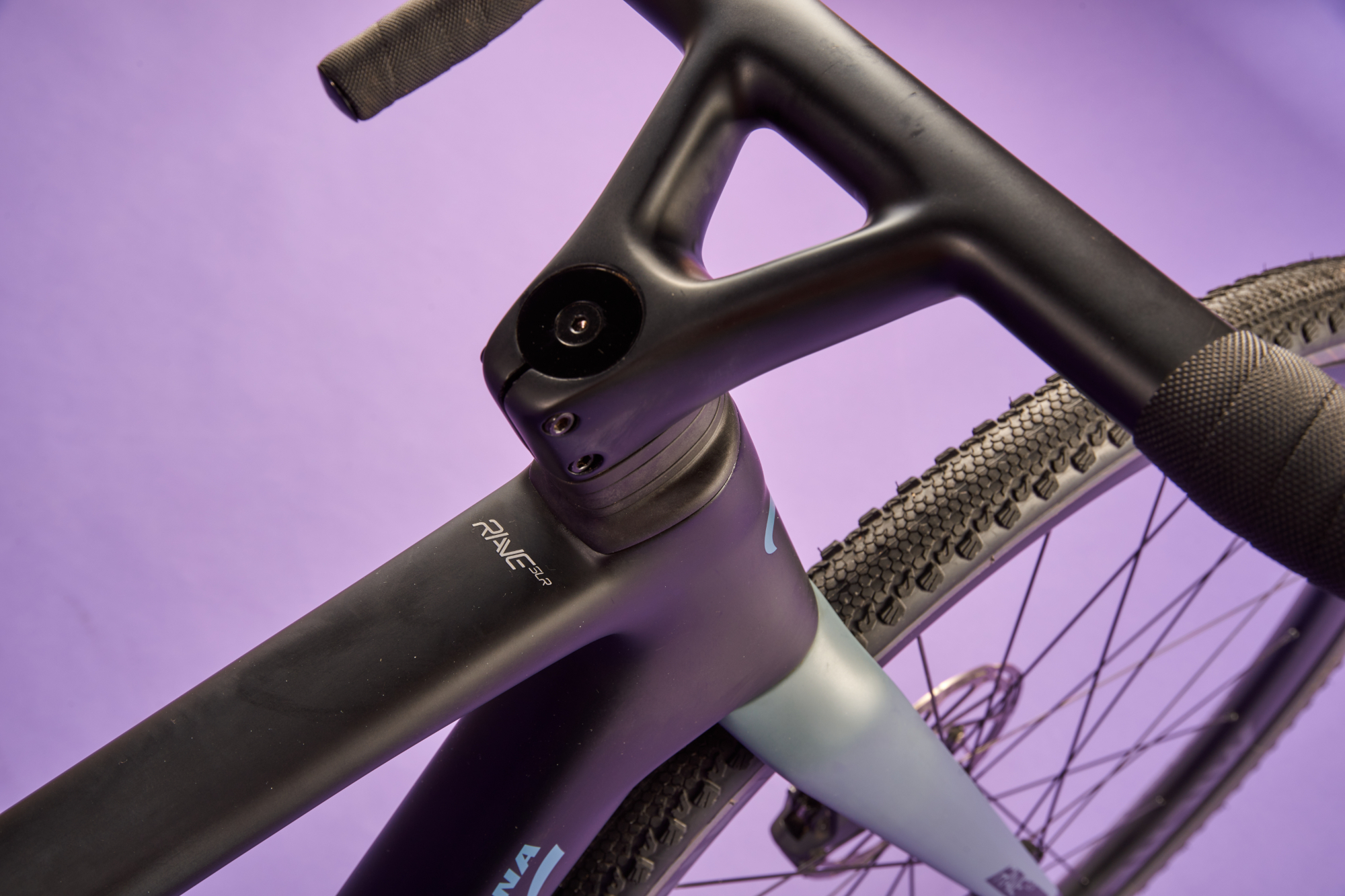
The cues of progressive geometry are there, but tempered a little for a gravel bike geared more towards speed than out-and-out burliness. A similar middle line is taken at the rear end, with 423mm chainstays being notably short for a gravel bike – only very, very few tuck them in any tighter than 425mm – but it’s still longer than you’d typically see on an endurance road bike (generally between 415 and 420mm).
Further solidifying its place in the more speed oriented side of gravel is the low front end. With a stack of 551mm in a size medium, it’s more slammed than some endurance bikes, while the claimed frame weight of 950g makes it lighter than many carbon road-specific frames on the market. Although this is qualified with only having clearance for tyres up to 42mm wide, which is on the narrower side for a gravel bike.
The press fit bottom bracket and fully internally routed cabling does stand to make the Rave SLR a little less user friendly, although in this electronic, hydraulic spec, there really isn’t any need to be replacing cables even in a yearly service. The seatpost is a proprietary model and the handlebars feature a funky twin stem set up.
Components
With the optimizations for speed, a 2x gravel groupset really wouldn’t be out of place here, but SRAM’s AXS XPLR 1x12 drivetrain in its second-tier Force configuration still makes for an apt pairing.
With a 10-44t cassette, it delivers a gearing range close to that of a 46/30t crankset with an 11–34t cassette 11-speed cassette – whilst also offering one single tooth jump, from the 10t to the 11t sprocket. The tightest that 11-speed cassette goes is two-tooth jumps.
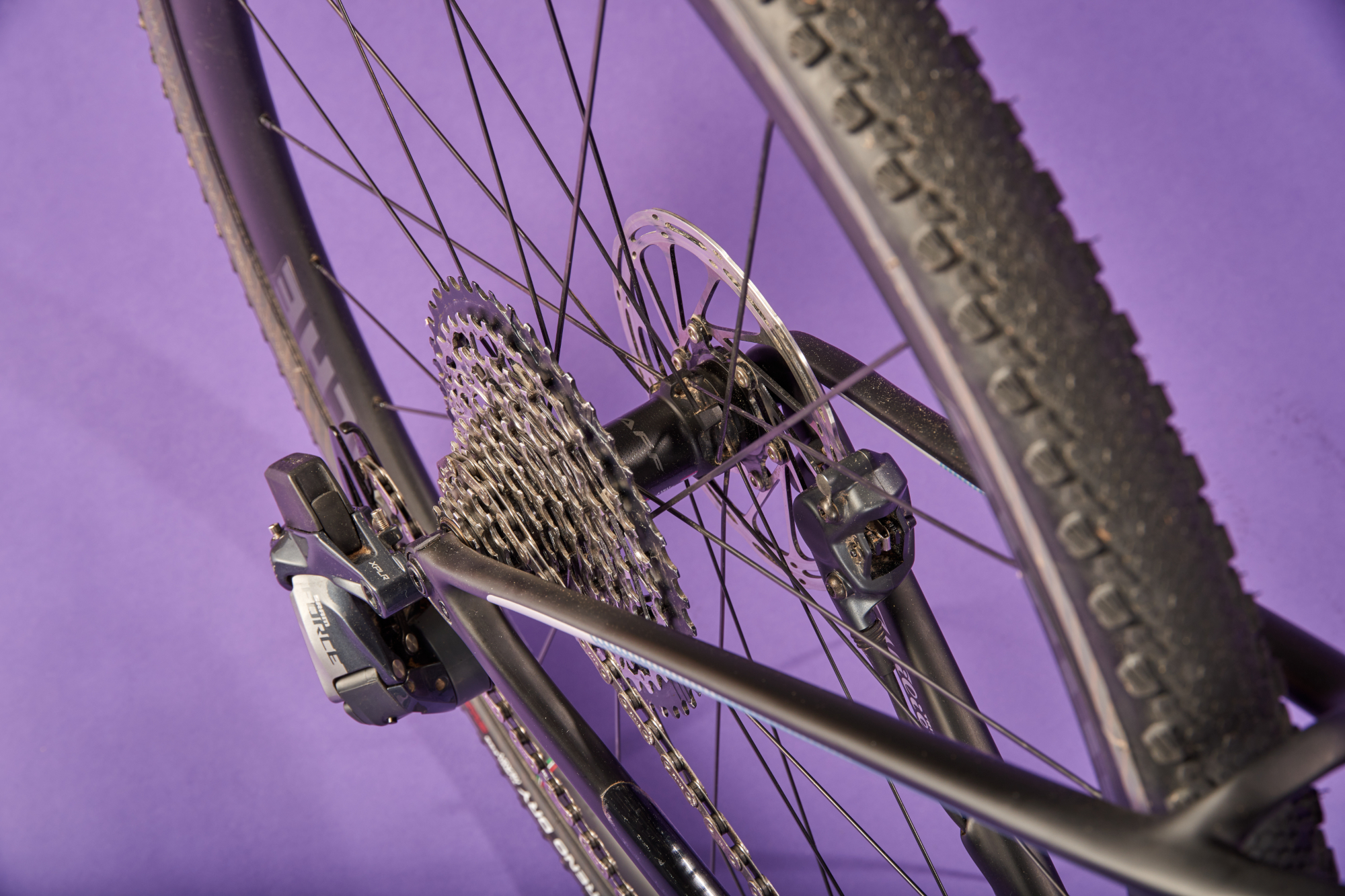
Paired to a 40t chainring, it offers a good band of gears for both the high and low ends, although a 38t chainring would likely provide a better balance for most people (myself among them).
As with all the AXS configurations, the braking is hydraulically actuated and 160mm rotors are specced both front and rear.
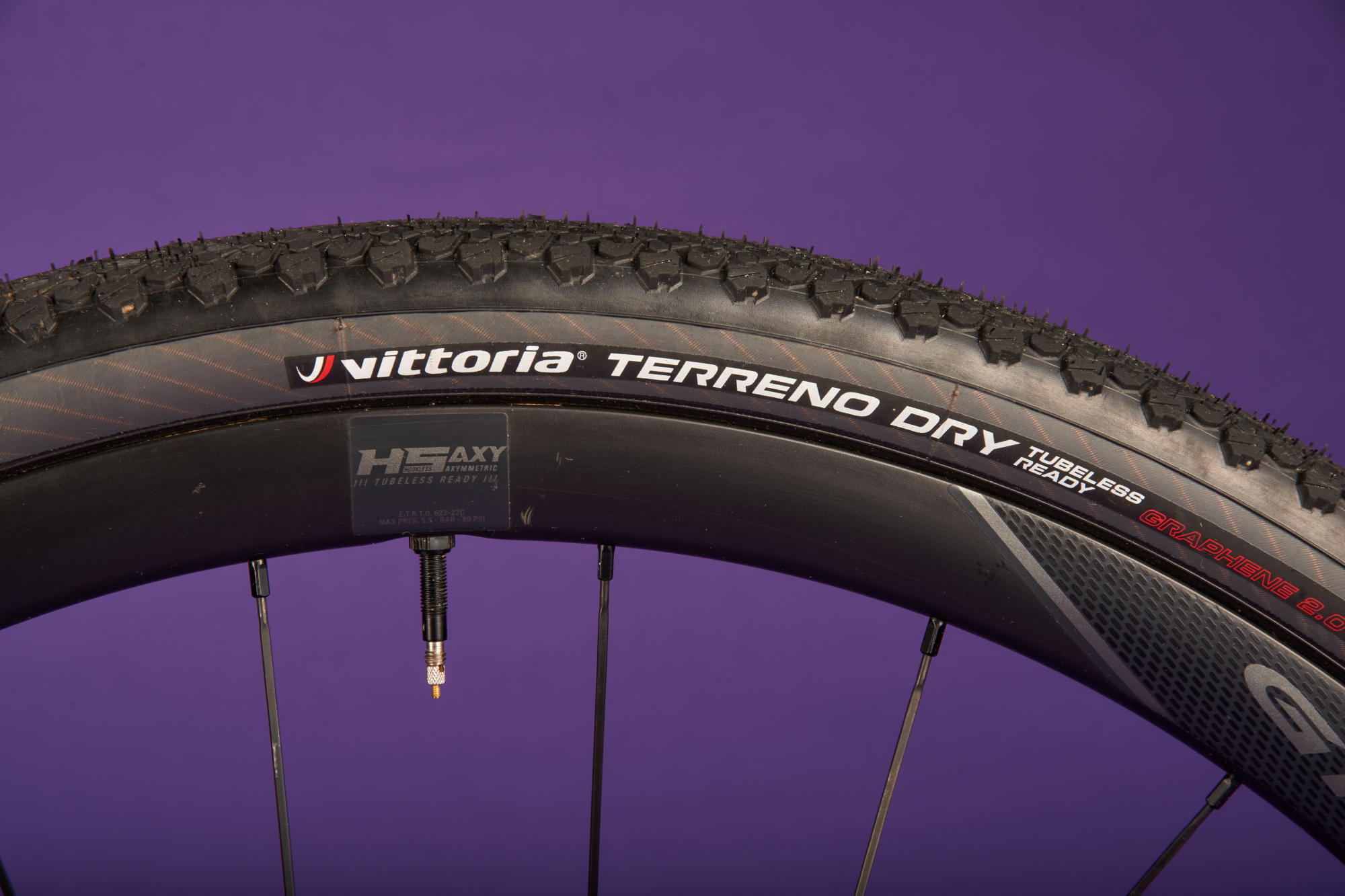
The wheels are Miche’s Graff carbon hoops, with a shallow section profile and bladed straight-pull spokes. I didn’t strip the wheels down to weigh them, but with the complete bike coming in at 7.75kg, they can’t be overly hefty themselves.
The tyres are from Vittoira, being the Terreno Dry Graphene 2.0 model in a 38mm width. The tread is quite minimal, being little more than a file down the centre, although the shoulder knobs do broaden out quite a bit.
The ride
With that impressively low weight, the Rave SLR was blast from the first pedal strokes, effortlessly spinning up to speed. With that low front end, maintaining the pace was distinctly easier than on other, more generously stacked gravel bikes. Together with those minimally treaded Vittoria tyres, the Rave SLR was just as quick as a mid-range endurance road bike – faster even than some.
Taking it onto the narrower back roads and lanes, the sort pitted with potholes and washed with a loose shingle, the Rave felt like it was on another level. Although ostensibly roads, they’re a bit rough and unpredictable on an endurance road bike, with the vibrations and surface debris hampering the speed. At the other end, although a burly gravel bike easily soaks up that terrain, less efficient tyres and an upright position means you’re constantly fighting not to lose speed.
The Rave SLR, on the other hand, was completely in its element. The 38mm tyres provided ample grip and cushioning for the more general chatter, while the pin-point handling and general low weight of the bike allowed line changes and bunny hops to happen at the speed of thought. The efficiency with that bit of extra capability really felt the perfect combination for those sort of roads.
And those same qualities shone through on the smoother hardpack trails. It’d flit between the trees, up sharp inclines and then confidently descend down the other side. I found the handling was spot-on for the twists and turns of natural riding: not too fast as to be uncontrolled, but still very quick.
For the tight 180 degree turns of a summer cyclocross course, I would want the handling to be a little faster – but that would bring its own compromises of skittishness and twitchiness on the trails.
On rougher trails, though, the Rave SLR started to butt up against its limits. Welsh fireroads are a lot more forgiving than the majority of UK bridleways, but even on these I found the 38mm tyres overwhelmed by the terrain. Even going up to the maximum of 42mm would only serve to mitigate the problems of getting hung up and pinged about on the rocks – I find 45mm is really the minimum for a reasonable ride.
Of course, if you live near a network of smooth, dirt roads, this wouldn’t be any sort of concern – the Rave SLR would be a fast gravel super-bike and that’d be the end of it. But for those living in the UK, it would be well worth considering what type of riding you’d be planning on using the Rave for.
If you’re currently squeezing 32mm tyres into a road frame and are happiest on broken roads with the occasional trail thrown in, then the Rave SLR would be an excellent choice for you. But if you’re a majority gravel rider, only reluctantly using roads to interlink sections of trail – but who wants a bit of an injection of speed – I’m afraid the Rave just isn’t right for the task. You’d be underbiked more often than is fun.
A model like Specialized’s new Crux would suit much better, with its capacity for up to 2.1 inch 650b tyres or 47mm in 700c.
Finally, one quick mention of the handlebars. Ergonomically, these were great, with a reach and drop that put me in a controlled and confident position and felt good switching hand positions. The flare felt a good balance too, being wide enough for a bit of extra stability, but not so extreme as to cause any issues with hand position.
But while the split stem might look good, it proved really quite impractical. It made attaching certain handlebar bags a faff, it removed the helpful head unit mounting position that a stem going off at 12 o’clock provides, and it limits the amount of bar real-estate for mounting any accessories. The ‘all-road’ builds have a more standard design and this would be preferable on the gravel models.
Value
At €8,400, the Wilier Rave SLR is unquestionably expensive. The Orbea Terra M21e Team 1x with the same groupset costs £5,299.00 / $5,799.00 / €5,299.00, while the Scott Addict Gravel 10 with a 2x12 SRAM Force groupset costs £5,399.00 / $6,999.99 / €5,999.00.
That said, it’s not so far out of line with some other, high-end racing gravel bikes, such as the Cervélo Aspero-5 £8,199.00 / $7,400.00, and the Specialized Crux Pro at £7,400 / $8,000 and Wilier isn’t known for trying to be competitive with its price points.
Verdict
The Wilier Rave SLR is a lightweight and sharp handling gravel bike that’s incredibly fun to ride. It’s very much in the camp of ‘lighter gravel’ – ideal if you have miles of smooth dirt roads at your disposal – but for British riding, the use case is a little more specific.
The Rave SLR is extremely fast and comfortable over narrow and neglected back lanes and smoother off-road trails. Due to the relatively narrow tyre clearance, you’ll likely find yourself under-biked if trying to ride majority off-road route in the UK, but for genuinely mixed riding, it is lightning quick and a whole lot of fun. Whether that justifies the price tag depends on just how deep your pockets are.
Specs
Frame: Rave SLR - carbon monocoque hus mod + crystal liquid polymer
Fork: Rave SLR - carbon monocoque hus mod + crystal liquid polymer
Handlebars: J-bar Integrated carbon
Saddle: Prologo Dimension AGX
Shifters: SRAM Force eTap AXS
Derailleur: SRAM Force eTap AXS
Crankset: SRAM Force D1 DUB GLS DM 40t
Wheelset: Miche Graff Carbon
Tyres: Vittoria Terreno Dry Folding 700x38mm
Weight: 7.75kg

Thank you for reading 20 articles this month* Join now for unlimited access
Enjoy your first month for just £1 / $1 / €1
*Read 5 free articles per month without a subscription

Join now for unlimited access
Try first month for just £1 / $1 / €1
Get The Leadout Newsletter
The latest race content, interviews, features, reviews and expert buying guides, direct to your inbox!

After winning the 2019 National Single-Speed Cross-Country Mountain Biking Championships and claiming the plushie unicorn (true story), Stefan swapped the flat-bars for drop-bars and has never looked back.
Since then, he’s earnt his 2ⁿᵈ cat racing licence in his first season racing as a third, completed the South Downs Double in under 20 hours and Everested in under 12.
But his favourite rides are multiday bikepacking trips, with all the huge amount of cycling tech and long days spent exploring new roads and trails - as well as histories and cultures. Most recently, he’s spent two weeks riding from Budapest into the mountains of Slovakia.
Height: 177cm
Weight: 67–69kg
-
 A bike rack with an app? Wahoo’s latest, and a hub silencer – Sea Otter Classic tech highlights, Part 2
A bike rack with an app? Wahoo’s latest, and a hub silencer – Sea Otter Classic tech highlights, Part 2A few standout pieces of gear from North America's biggest bike gathering
By Anne-Marije Rook Published
-
 Cycling's riders need more protection from mindless 'fans' at races to avoid another Mathieu van der Poel Paris-Roubaix bottle incident
Cycling's riders need more protection from mindless 'fans' at races to avoid another Mathieu van der Poel Paris-Roubaix bottle incidentCycling's authorities must do everything within their power to prevent spectators from assaulting riders
By Tom Thewlis Published
-
 Man hands himself in to Belgian police after throwing full water bottle at Mathieu van der Poel during Paris-Roubaix
Man hands himself in to Belgian police after throwing full water bottle at Mathieu van der Poel during Paris-Roubaix30-year-old was on Templeuve-en-Pévèle cobbled sector when television pictures showed the bottle hitting him in the face
By Tom Thewlis Published